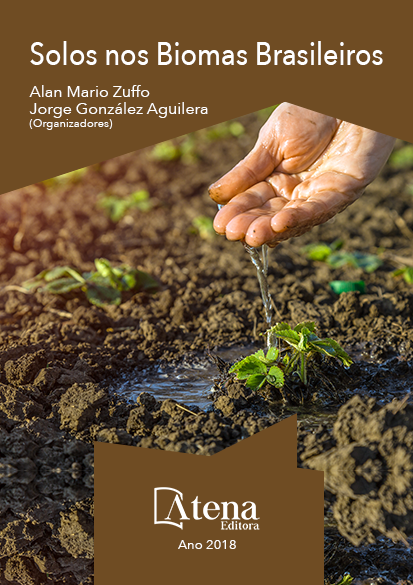
DEPOSIÇÃO DE MICRONUTRIENTES DA SERAPILHERIA EM ÁREAS DE MINERAÇÃO SUBMETIDAS A MÉTODOS DE RESTAURAÇÃO FLORESTAL, PARAGOMINAS, PA
A mineração de bauxita tem se
destacado no Estado do Pará, no entanto essa
atividade ocasiona impactos negativos ao meio
ambiente. Diante disso, torna-se necessário o
monitoramento desses ambientes para verificar
se há necessidade de reajustes no plano de
recuperação de áreas degradadas – PRAD. Para
recuperação dessas áreas, tem sido utilizado o
método de plantio direto de mudas arbóreas
nativas (PM) e a indução da regeneração natural
(RN) por meio da devolução do solo superficial
(topsoil), além de um fragmento florestal
localizado nas proximidades (FF). Para esse
estudo foram instalados 30 coletores de 0,25 cm²
para coleta de serapilheira em cada ambiente.
Todo material foi seco, pesado e moído para
análise dos elementos Cu, Fe, Mn e Zn. Para
o cálculo da deposição total de micronutrientes
para o solo, multiplicou-se os valores do teor
de cada elemento pela quantidade anual de
serapilheira. Os resultados dos valores foram
submetidos ao teste de normalidade e análise
de variância, sendo as médias comparadas
pelo teste de Tukey a 5% de probabilidade de
erro. Não houve diferença na deposição de Cu
e Zn entre os ambientes estudados. No entanto,
os valores de Fe foram superiores na RN (16,35
Kg ha-1 ano-1) não diferindo do PM (12,69 Kg
ha-1 ano-1). O Mn apresentou os valores mais
altos para todas as áreas, sendo constatada
diferença significativa (p-valor=0,0002), onde
o maior valor foi registrados no RN. O Fe
apresentou maior transferência para o solo,
juntamente com o Mn apresentou os maiores
conteúdos na área de RN.
DEPOSIÇÃO DE MICRONUTRIENTES DA SERAPILHERIA EM ÁREAS DE MINERAÇÃO SUBMETIDAS A MÉTODOS DE RESTAURAÇÃO FLORESTAL, PARAGOMINAS, PA
-
DOI: 10.22533/at.ed.08718141218
-
Palavras-chave: : elementos-traço, solos da Amazônia, análise de componentes principais.
-
Keywords: trace elements, Amazonian soils, principal components analysis.
-
Abstract:
Bauxite mining has been
prominent in the State of Pará, however. Faced
with this, it becomes the recovery plan for
degraded areas – PRAD. (PM) and the natural
regeneration (RN), than the superficial soil soil,
in addition to one forest fragment located on
the (FF). For this set, 30 0.25 cm² collectors were installed to collect litter in each environment. All the material was dried, weighed
and ground to analyze Cu, Fe, Mn and Zn elements. For the calculation of the total
deposition of micronutrients to the soil, the values of the content of each component of
the annual protein of the litter are multiplied. The levels of value were submitted to the
normality test and analysis of variance, being Tukey’s test comparison method the 5%
probability of error. It was not a difference in the deposition of Cu and Zn between the
studied environments. However, Fe values were higher in the RN (16.35 Kg ha-1 year1) than in the PM (12.69 Kg ha-1 year-1). The Mn read more values for higher areas,
being verified significant difference (p-value = 0,0002), where the highest value was
registered in the RN. Fe that major transferred to the solo, With the Mn published the
largest ones in the RN area
-
Número de páginas: 15
- Thaíse Cristina dos Santos Padilha


